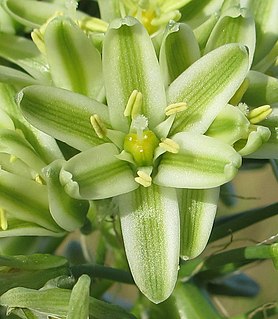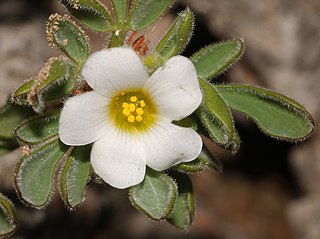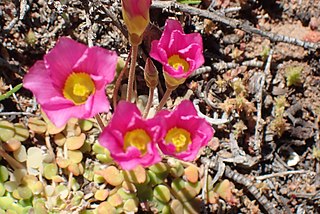
Rooibos, meaning "red bush", is a broom-like member of the plant family Fabaceae that grows in South Africa's fynbos.

Carl Peter Thunberg, also known as Karl Peter von Thunberg, Carl Pehr Thunberg, or Carl Per Thunberg, was a Swedish naturalist and an "apostle" of Carl Linnaeus. After studying under Linnaeus at Uppsala University, he spent seven years travelling in southern Africa and Asia, collecting and describing many plants and animals new to European science, and observing local cultures. He has been called "the father of South African botany", "pioneer of Occidental Medicine in Japan", and the "Japanese Linnaeus".

Kirstenbosch is an important botanical garden nestled at the eastern foot of Table Mountain in Cape Town. The garden is one of 10 National Botanical Gardens covering five of South Africa's six different biomes and administered by the South African National Biodiversity Institute (SANBI). Prior to 1 September 2004, the institute was known as the National Botanical Institute.

Chlorophytum comosum, usually called spider plant due to its spider like look, but also known as spider ivy, ribbon plant, and hen and chickens is a species of evergreen perennial flowering plant of the family Asparagaceae. It is native to tropical and southern Africa, but has become naturalized in other parts of the world, including western Australia. Chlorophytum comosum is easy to grow as a houseplant because of its resilience, but it can be sensitive to the fluoride in tap water, which commonly gives it "burnt tips". Variegated forms are the most popular.

Protea laurifolia, also known as the grey-leaf sugarbush, is a shrub from South Africa. It is native to the Cape Provinces of South Africa.

Albuca bracteata, is known by the common names pregnant onion, false sea onion, and sea-onion. It is a species of bulbous flowering plant in the family Asparagaceae. Its flowering stems can reach a height of 90 cm and can carry up to 100 greenish white flowers.

Mairia is a genus of perennial herbaceous plants assigned to the family Asteraceae. All species have leathery, entire or toothed leaves in rosettes, directly from the underground rootstock, and one or few flower heads sit at the top of the stems that carry few bracts. These have a whorl of white to mauve ray florets surrounding yellow disc florets in the centre. In general, flowering only occurs after the vegetation has burned down. The six species currently assigned to Mairia are endemic to the Western Cape and Eastern Cape provinces of South Africa. Some of the species are called fire daisy in English and vuuraster in Afrikaans.

Ledebouria revoluta, the south Indian squill, is a flowering plant species in the genus Ledebouria found in Southern Africa and India.

Hydnora is a group of parasitic plants described as a genus in 1775. It is native to Africa, Madagascar, and the Arabian Peninsula. Hydnora pollinates through brood-site mimicry. This is a method of pollination in which the plant emits a smell that is attractive to insects, so that the plant can trap the insect and allow to take pollen so that it can pollinate other Hydnora.

Geissorhiza melanthera is a small perennial plant of 14–18 cm high that is assigned to the Iridaceae. It survives the dry southern summer through storage of its resources in a corm. The stem carries two or three erect, sticky leaves of up to 18 cm (7 in) long, H-shaped in cross-section. This species blooms with six to twelve bilaterally symmetrical flowers, in a spike. Sometimes the spike has one side branch with fewer flowers. Each flower has six pale beige perianth lobes, a purple-red ring around a purple red tube and three blackish stamens. Each flower is subtended by two 1¼–2¼ cm long green bracts. This species was found flowering from the end of September till mid October. It is an endemic of the western slopes of the Piketberg mountains in the Western Cape province of South Africa.

Schoenus compar is a species of sedge endemic to southern South Africa.

Protea nana, also known as the mountain rose or mountain-rose sugarbush, is a flowering shrub which belongs within the genus Protea.

Hypericum pseudohenryi, called the Irish tutsan, is a species of flowering plant in the family Hypericaceae, endemic to China. The species has been awarded the Royal Horticultural Society's Award of Garden Merit. It is invasive in South Africa.

Oxalis virginea, commonly known as Virgin sorrel, is a species from the genus Oxalis. It is endemic to South Africa. O. virginea was first described by Nikolaus Joseph von Jacquin in 1798. This species is apparently lacking a type specimen.
Achyranthemum, commonly called the chaff flowers, is a genus of flowering plant in the family Asteraceae which is native to South Africa. The genus was first described by Nicola Bergh in 2019 in the South African Journal of Botany, and it was segregated from the genus Syncarpha due to its representation of a separate lineage.

Lobostemon is a genus of flowering plants belonging to the family Boraginaceae. Its native range is South Africa. The majority of species are limited to the winter rainfall area of the country, from Springbok to Mossel Bay. In Afrikaans these species are known as agtdaegeneesbos, or loosely translated, bush that will heal in eight days. As this name suggests, many species have medicinal properties. This is best known from Lobostemon fruticosus, which is used for treating wounds, blood poisoning, ringworm, skin diseases and syphilis.

Oxalis inaequalis is a bulb-forming species of flowering plant in the wood sorrel family. It is native to South Africa's Cape Provinces. Each plant produces a rosette of up to 70 succulent leaves, which occasionally produce aerial bulbs. The flowers are yellow and copper-coloured. The sepals are of unequal sizes, hence the specific epithet "inaequalis", which is Latin for "unequal".
Plectranthus ambiguus, the pincushion spurflower, is a species of flowering plant in the family Lamiaceae, native to South Africa. Its cultivar 'Manguzuku' has gained the Royal Horticultural Society's Award of Garden Merit. Flowers are pinkish purple with faint purple lines on the upper edge.

Oxalis palmifrons is a species of the wood sorrel family, Oxalidaceae, native to South Africa's Northern and Western Cape provinces.

Polhillia ignota is a species of flowering plant in the genus Polhillia. Prior to its rediscovery in September 2016, it was known from two specimens, and declared extinct in 2014. There are only 13 plants known, on a small renosterveld fragment less than 3 ha in size. It is endemic to Eendekuil, in the Western Cape.


















